Is net positive migration a factor behind the UK’s recent rise in house prices? Given the rapid rise in house prices since the mid-1990s and the corresponding rise in the number of immigrants, it is hard to avoid the conclusion that levels of net migration are having, at least, some effect on exacerbating the UK housing crisis. However, there are also interesting studies showing that high levels of net immigration can lead to lower house prices in certain localities as native homeowners move elsewhere.
Generally, economists find net immigration has positive benefits, with limited impact on wages and unemployment rates. Immigrants tend to be of working age, and so are net contributors to the government’s finances.
While people fear immigrants take jobs and push down wages – this ignores the other half of the equation. Immigrants create their own demand, creating new jobs. Large-scale immigration is consistent with rising real wages, though it is not guaranteed as recent experience shows. For more: See Impact of immigration on UK economy.
But, what about housing? In particular, what is the impact of large-scale net immigration, when there is a shortage of supply, such as the UK?
Immigration and demand for housing
Net immigration will increase demand for housing. Immigrants are likely to choose rentable properties. According to Oxford Migration survey, 74% of recent migrants (those who have been in the UK for five years or less) were in the private rented sector in the first quarter of 2015. (link)
But, the overall increase in the number of households and rentable demand will put upward pressure on house prices too; strong demand for renting has increased the number of buy to let landlords looking to profit from rising demand and rising rents.
With net immigration increasing number of UK households, demand for housing will rise.
The problem in the UK is that demand for housing has been growing faster than the supply. The number of new homes built to buy/rent is fairly limited. (in range of 100-200,000. See UK Housing supply). Therefore, this increase in demand, combined with limited supply is a factor in pushing prices higher. This leads to both higher prices for rents and also higher prices of house prices.
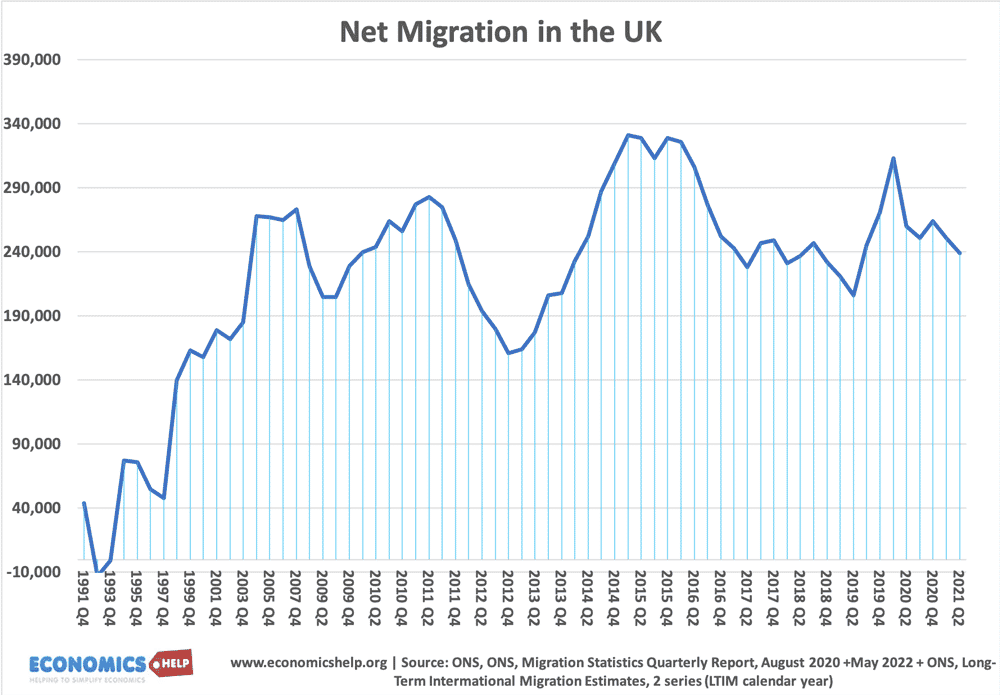
Net migration levels since 1996. Positive net migration means the total level of immigration is higher than total emigration.
Index of renting is past seven years
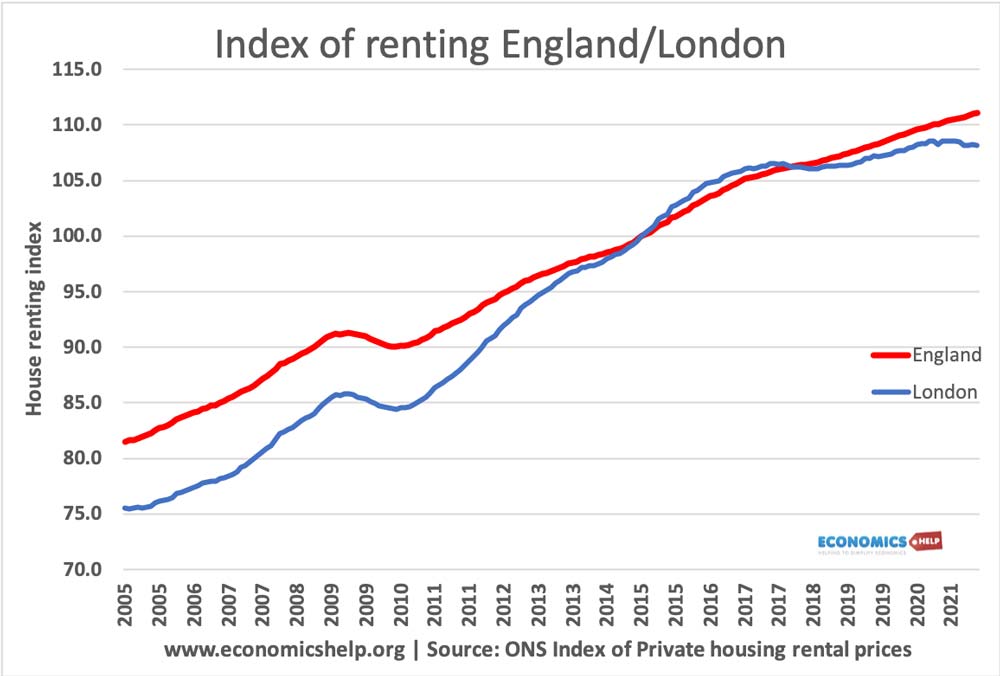
Price of renting rising – especially in London and south England.
UK house prices
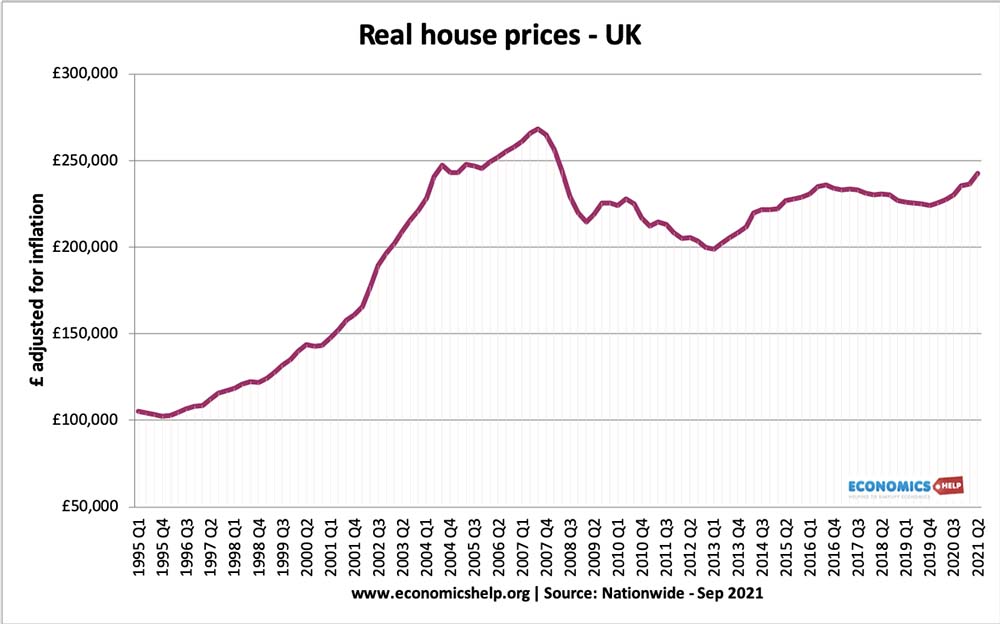
Real house prices more than doubled since 1996. There are many factors affecting house prices apart from net migration levels. But, the post-1996 increase in net migration is likely to be one factor pushing up house prices and rents.
Net migration with stable house prices
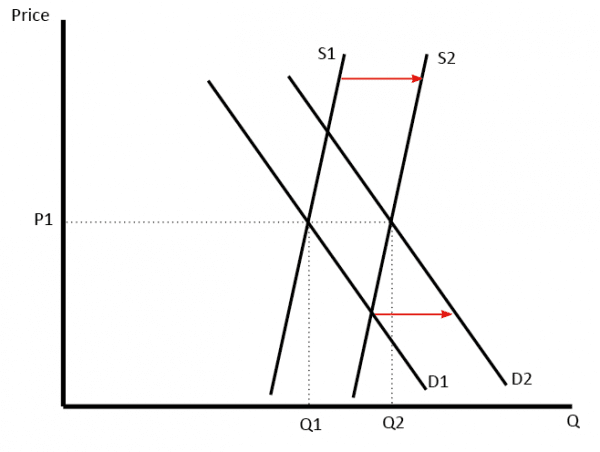
The difficulty is that the UK has struggled to increase housing stock at the required rate for several years/decades. It is estimated, the UK would need to build, at least, 250,000 new houses a year to keep pace with changing demographics and a rising population, but there is limited land and a reluctance to build on greenfield sites. Others disagree and argue we could build more properties by building mini-pods on brownfield sites, but any new housing project invariably meets local opposition. There is no easy solution.
Immigration and congestion
Even if the UK could build the required number of housing, it would raise concerns over population density and congestion. With a population rising rapidly, it places greater strain on transport – rail, road and bus. But, already there is strong opposition to HS2 and new road building programmes would be unpopular too.
Regional impact
The impact of net migration on the UK depends on geographical areas. Some areas, such as South East are seeing much higher rates of net migration, and this has correlated to stronger growth in rents and house prices. Some areas in the north of England have only a limited amount of net migration; house price growth has been slower in these areas.
However, one study found that the impact of immigration in small local areas can be mixed. They found high levels of immigration could lead to lower house prices in particular localities – because a 1% rise in the number of low-education immigrations could cause an outflow of the wealthy native population of 1.7%, causing house prices to fall in that particular locality. It doesn’t mean this local house price fall means national house prices are falling, in fact, it puts more upward pressure on other localities where wealthy native homeowners move to.
This geographical impact is mixed, with some areas of high net immigration seeing the rise in house prices, in areas where the immigrants are relatively highly skilled and education. (Immigration and local house prices)
Past experiences of immigration
The UK has experienced large levels of net immigration in the past, e.g. Irish immigration turn of the century, immigration from Commonwealth countries 1950s / 60s. These periods didn’t cause a housing crisis or sustained rise in real house prices. In those decades, the UK housing market was more flexible and able to increase supply in response to the rise in population.
Factors other than net migration causing housing crisis
- Delay in getting married, more single people, rise in life expectancy are all causing a rise in the number of households.
- Shortage of bricklayers and construction workers could adversely affect housing supply. Immigration can help fill labour shortages in these semi-skilled jobs and help the construction industry.
- Low-interest rates helping to keep mortgages affordable and encourage people to buy, despite high prices.
- Shortage of social housing and local authority housing. Immigrants only account for a relatively small percentage of social housing rents.
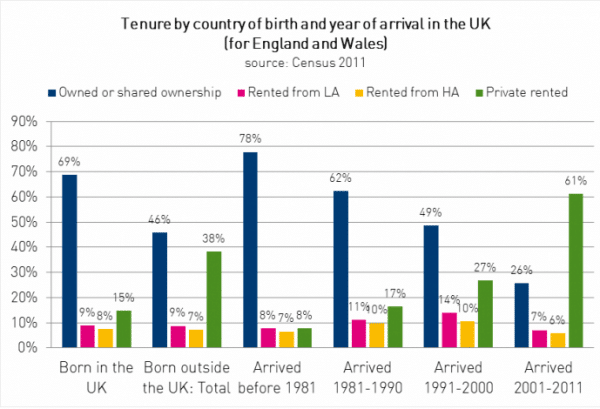
Conclusion
Levels of net immigration into the UK since the mid-1990s are relatively high and are a major factor in population growth (roughly 50% of population growth is due to net migration). This period has also corresponded to a rise in house prices and rise in house prices/income ratios (especially in London and south). Net immigration is not the cause of the UK housing crisis, however, given a fundamental disequilibrium between supply and demand, net migration has exacerbated the problem and has contributed to the overall house price rises.
To some extent, the problem could be solved by dealing with the root cause of housing crisis which is the lack of affordable housing, but this is quite difficult to achieve in practice.
It is worth bearing in mind that many have benefited from rising house prices – the increased wealth of homeowners, but at the same time has created many losers in an increasingly unequal society – divided between old and young – property owners and generation rent.
Related

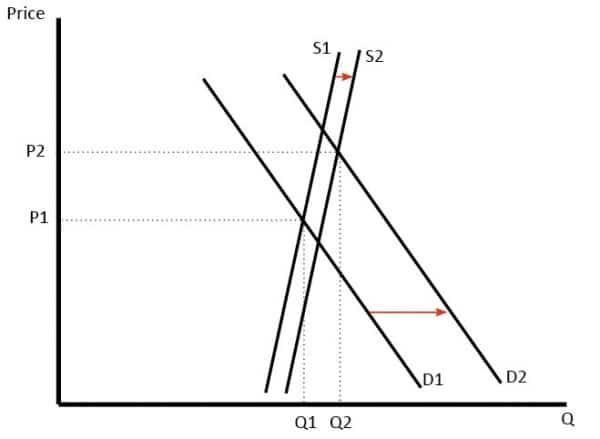
This was a well outstanding informative post you have shared on this page about the immigration and housing but if the UK could build the required number of housing, it would raise concerns over population density and congestion. With a population rising rapidly, it places greater strain on transport – rail, road and bus. But, already there is strong opposition to HS2 and new road building programme would be unpopular too.
Thanks.
The Onus is on UK govt to control immigration/population considering housing availability and reduce strain on other utilities,
Lift ban when necessary and place ban/or hold when necessary in a particular location/city and switch to other cities where population growth is required.